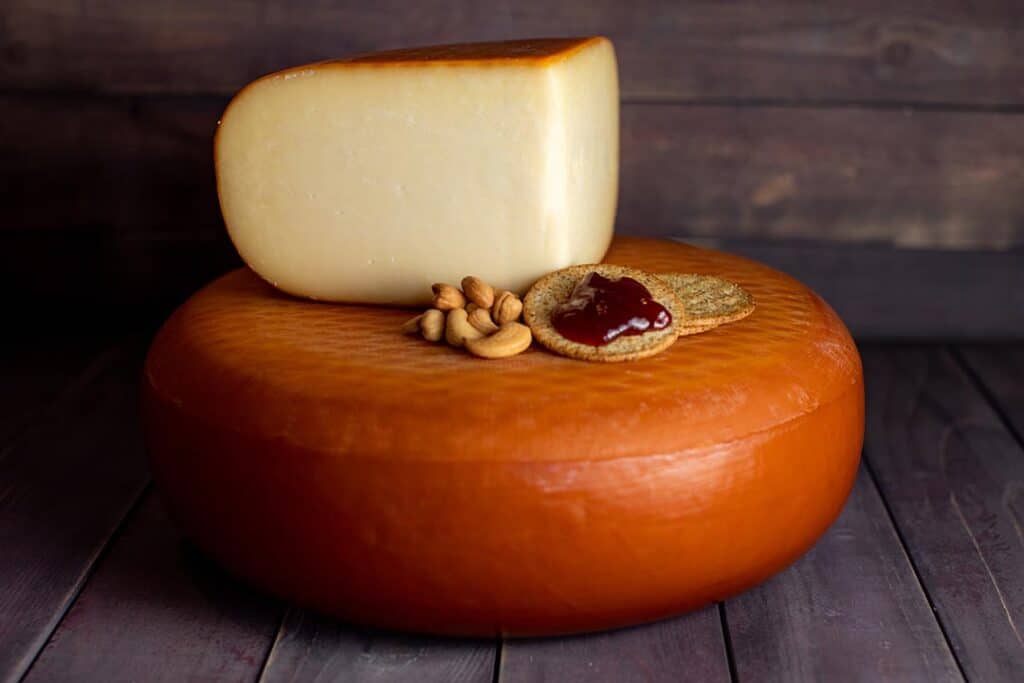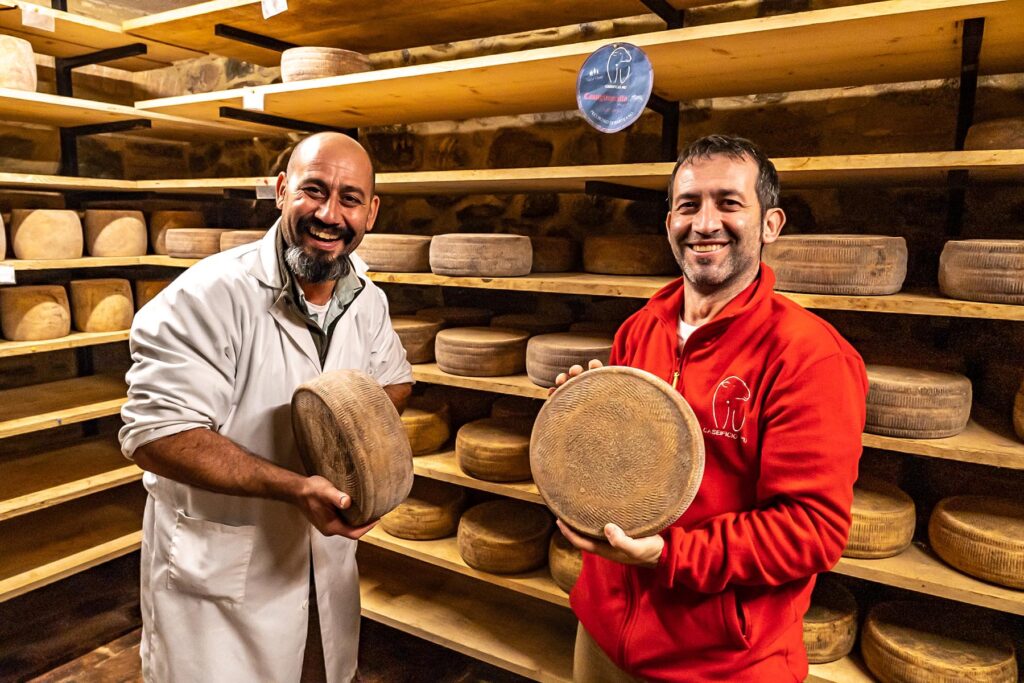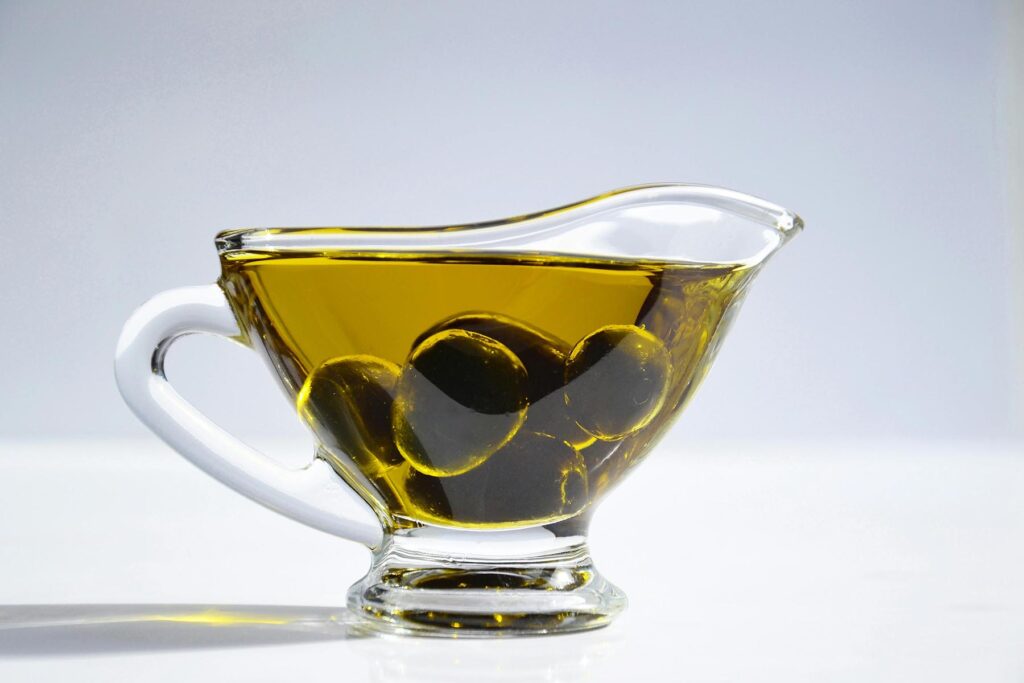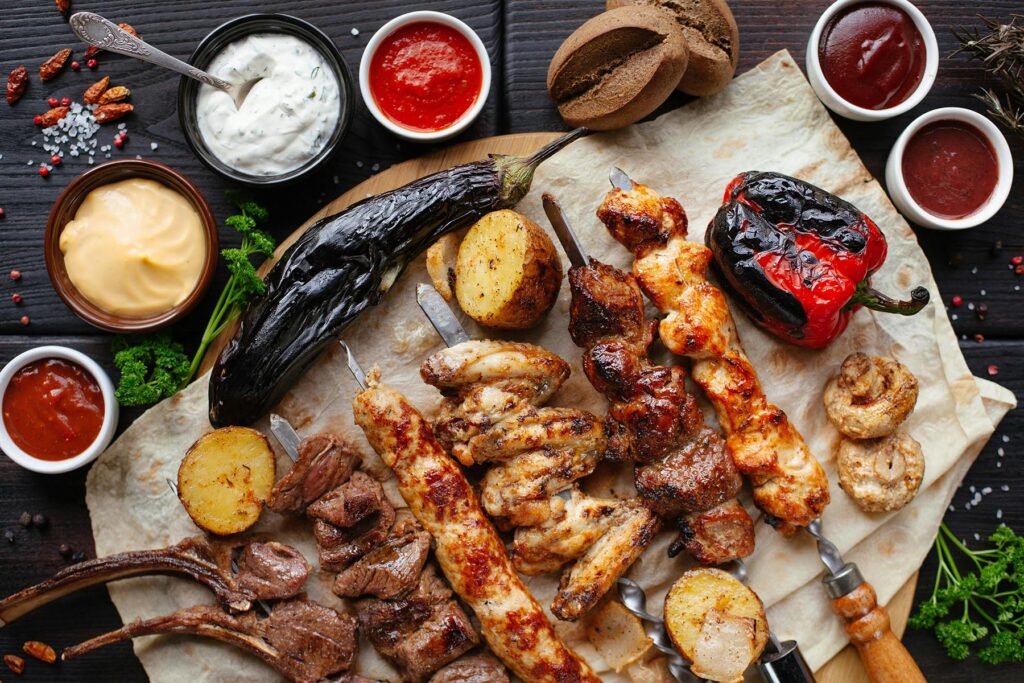
Gouda is a type of cheese that originated in the Netherlands. It is a semi-hard cheese typically made from cow’s milk, although you can find varieties made from other kinds of milk, such as goat’s or sheep’s milk. Gouda has a pale yellow interior with a creamy, smooth texture, and a rind that ranges in color from yellow to brown, depending on how long it has been aged. Gouda is known for its mild, nutty flavor, and is often used in sandwiches, melted on top of dishes, or eaten on its own as a snack or appetizer. It is one of the world’s most popular and widely recognized cheeses.
How is Gouda made?
Gouda cheese is made using a process called “washed-curd cheese making.” Washed-curd cheese making is the process used to create a variety of cheeses, including Gouda, Edam, Colby, and others. In this process, the curds are washed with water after they have been cut from the coagulated milk.
The process of washing the curds involves pouring warm water over them and then draining the water off. This washing helps to remove some of the lactose and lactic acid from the curds. This process is unlike other cheese-making methods, such as cheddar cheese making, which involves cheddaring and stacking the curds. The washed-curd cheese-making process results in cheeses with a milder, creamier flavor and a softer, more elastic texture.
After the curds have been washed, they are cooked at a specific temperature to help expel more whey (the liquid portion of the milk) and to develop the desired texture of the cheese. The curds are then molded, salted, and aged to produce the final product.
For Gouda specifically, the steps to make the cheese involve:
- Milk preparation: The milk is heated to a particular temperature, then starter culture and rennet are added. The starter culture contains bacteria that will help develop the flavor and texture of the cheese, while the rennet will cause the milk to coagulate and form curds.
- Curd formation: The milk is allowed to sit until it coagulates and forms a solid curd. The curd is then cut into small pieces, and the whey is drained off.
- Curd cooking: The curds are then heated and stirred until they reach a specific temperature and pH level. This process helps to expel more whey and develop the characteristic texture of Gouda cheese.
- Molding: The curds are placed into a mold and pressed to remove more whey and shape the cheese into a wheel or block.
- Salting: The cheese is then salted, either by soaking it in a brine solution or by rubbing salt onto its surface. The salt helps to flavor the cheese and preserve it.
- Aging: The cheese is then aged for several months, during which time it develops its characteristic flavor and texture. The cheese can be aged for anywhere from a few weeks to several years, depending on the desired taste and texture. Once the cheese has been aged, it is ready to be packaged, sold, and enjoyed.
Why is Gouda so delicious?
The combination of flavor, texture, versatility, and nutritional value make Gouda a very popular and incredibly tasty cheese.
Gouda has a unique, nutty flavor that is distinct from other cheeses. This flavor results from how the cheese is made and aged so that it has plenty of time to develop a complex, rich flavor. The cheese has a high-fat content giving it its characteristic smooth, creamy texture that makes it very enjoyable to eat. It is a very versatile cheese that is perfect in various dishes. It can be grated, sliced, or melted, making it ideal for sandwiches, salads, charcuterie boards, cooked dishes, and so much more. It is also a good source of protein and calcium, making it a nutritious addition to a balanced diet when consumed in moderation.
How do you enjoy Gouda?
As we stated above, Gouda is an incredibly versatile cheese that is wonderful in a variety of ways. Some of the most popular ways to enjoy Gouda include (but are not limited to):
- Charcuterie or Cheeseboard: Gouda is a perfect addition to a charcuterie or cheeseboard paired with crackers, fruits, nuts, and more.
- Grilled Cheese Sandwich: Gouda’s creamy texture makes it an excellent choice for a grilled cheese sandwich. It melts well and adds a unique flavor to the sandwich.
- Mac and Cheese: Gouda can be used in place of, or alongside, other cheeses in a mac and cheese recipe, giving the dish a more upscale flavor and even creamier texture.
- Fondue: Gouda is wonderful when melted and used as a dip for bread, vegetables, and other snacks in a fondue pot.
- Omelet: Grate and add it to an omelet; the cheese will give it a rich and nutty flavor.
- Cheese Soups: Gouda is often used in cheese soups to add flavor and creaminess.
- And so much more.
Gouda’s mild, nutty flavor and creamy texture make it a popular choice for various dishes and a great addition to any cheese lover’s diet.
What are your thoughts on Gouda? Let us know in the comments!




